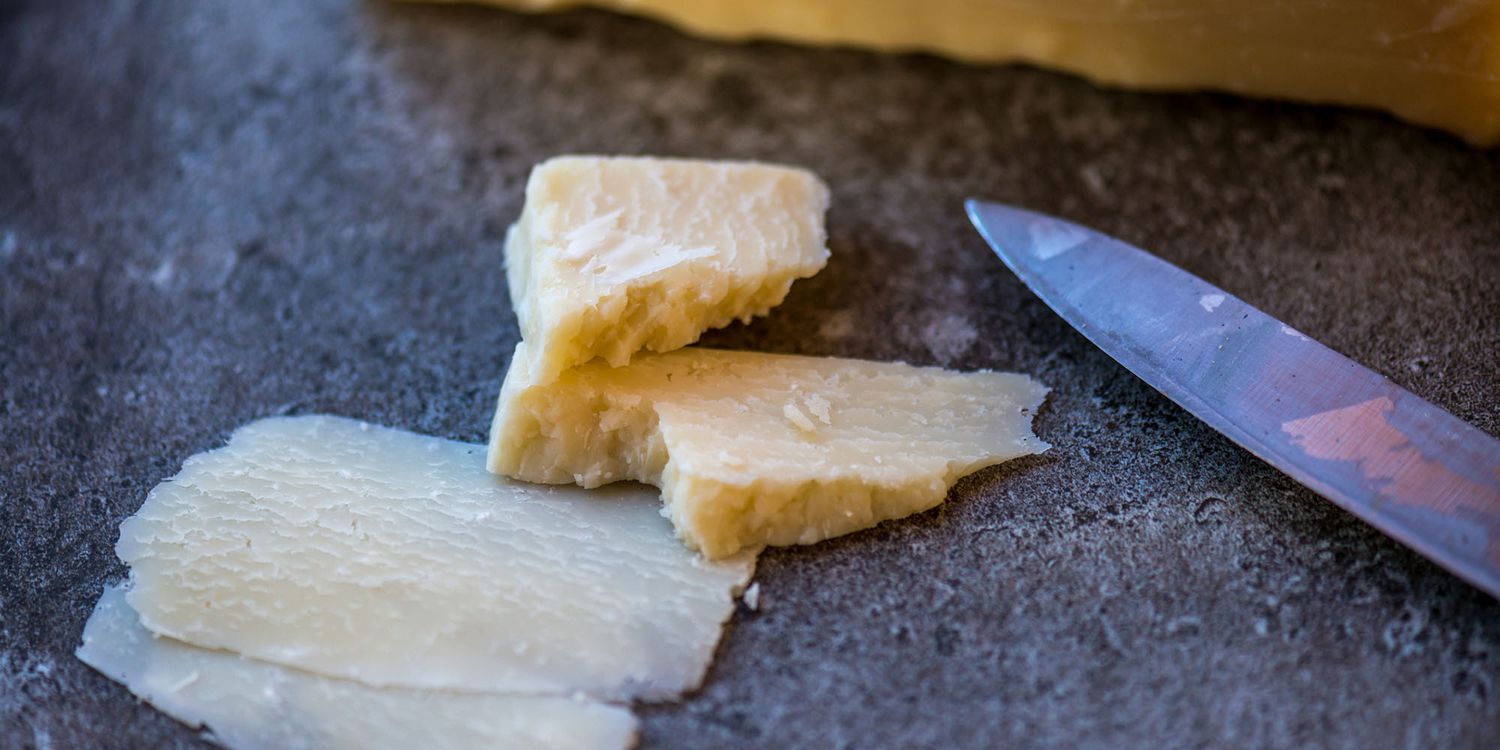Everybody knows and loves Italy’s most famous hard cheese: Parmesan. But the underdog of the hard cheese world is undoubtedly pecorino. It comes in a range of varieties that can be used in nearly any dish imaginable. After one bite of pecorino’s rich, silky, and salty flavor, you’ll be a fan for life.
What Is Pecorino Cheese?
Pecorino is a class of Italian sheep’s milk cheese. The root of the word, pecora, is the Italian word for sheep. Pecorino can encompass many different types of cheese with various flavors and textures. The kind you will most often run into due to its explosive popularity is hard, aged cheese similar to Parmesan. Like many hard cheeses, it’s aged for an extended period, and turning sheep’s milk into cheese is one of Italy’s oldest cheese traditions.
Types of Pecorino
The different types of pecorino are designated based on how long they have been aged, and these timelines directly correlate to texture and firmness. The three types are pecorino fresco, semi-stagionato, and stagionato.
Pecorino fresco: Aged only a month, this variety has a soft, springy texture and a mild flavor. This type holds up best to unfussy and raw preparations; think broken up atop a salad, a creamy reprieve on a cheese board, or a finishing crumble on a spicy pizza.
Semi-stagionato is in the middle; not quite a soft cheese and definitely not a hard cheese. It’s not as sharp as the firmer variety but has more flavor and body than the fresco — it’s the Goldilocks of the group. It shines brightest when paired with sour or salty ingredients and can get deliciously melty.
Stagionato is the oldest and firmest variety, aged six months or more. The name comes from the Italian word for aged or mature; this is the firm grating cheese most of us think of when we think of pecorino. The aging process imparts a sharp funk almost unlike any other cheese; the flavor is grassy and robust with a ping of tartness cut by the intense richness.
You might also encounter pecorino classified by where it was made, such as Pecorino Romano made in Rome, Pecorino Sardo made in Sardinia, and Pecorino Tousacna made in the region of Tuscany, among many others. Each city and region has its own distinct flavor profile impacted by all sorts of things we might not typically think of when it comes to cheese flavor, like the city’s proximity to the sea or the type of grass the sheep ingest.
Pecorino vs. Parmesan
Some might say that pecorino and Parmesan can be used interchangeably, but they’re much different when you get down to it. Sure, they’re both hard Italian grating cheeses, but they have individual and distinct characteristics. The most crucial distinction is that pecorino is made from sheep’s milk, and Parmesan is made from cow’s milk.
In terms of flavor, pecorino has more sharpness and sort of funky, almost fermented flavor in contrast to Parmesan’s more mellow savoriness. Both can be very nutty and salty, so in a pinch, you can swap one for another, but the flavor of the finished product may be much different.
When using these cheeses as an ingredient, good Parmesan is extremely firm and crumbly, making it difficult to melt or incorporate into pasta sauces. On the other hand, Pecorino melds beautifully and creates a more velvety texture due to its creamier nature.

Get the recipe: Spaghetti alla Carbonara
How to Cook with Pecorino
When it comes to pecorino fresco, the least amount of heat and intervention is best – it’s a star, so let it shine. Crumble it atop salads, pasta, pizza, and even veggies. It works great as a mild, cooling element against spicy or vinegary flavors.
Semi-stagionato loves to harmonize with salty, pickle-y flavors as well. Pair it with briny olives or in a salty salami sandwich. It also loves complex and deep sugars like dates, figs, and maple syrup, so it’s quite at home on a cheese board. Pecorino stagionato is hard-grating cheese, so it’s best suited to grating on top at the end. Try finishing pizza and pasta with a fluffy mountain of pecorino for a flavor boost.
How Long Does Pecorino Last?
Pecorino’s shelf life depends significantly on what type you have. Fresco and semi-stagionato are fresher and will spoil much quicker than harder varieties. Aim to use them within a week of bringing them home. As with many hard cheeses, stagionato can last much longer (up to a month) when stored properly.
If you buy pecorino already grated, make sure to use it within about three days as the high-fat content combined with the extreme amount of surface area in grated cheese spells out trouble when it comes to bacteria that promote spoilage.
Related:
- Our Ooiest, Gooiest, Cheesiest Recipes
- What Is Burrata and How Is It Made?
- What is Mascarpone?




